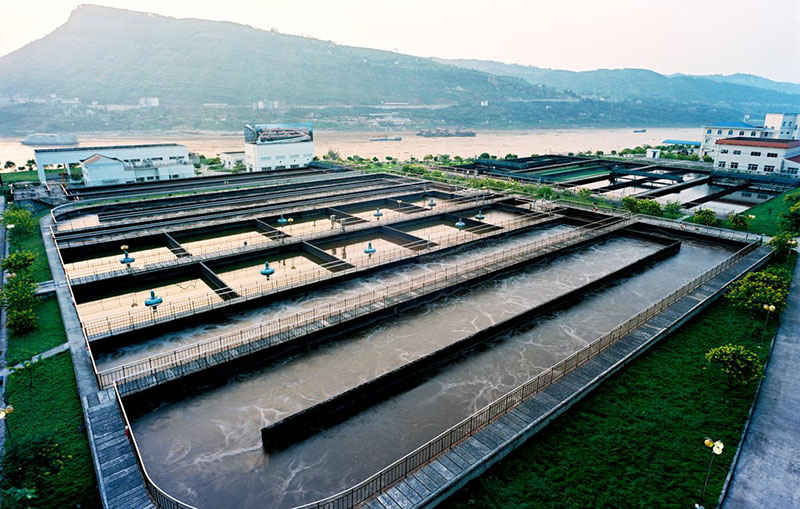The construction of urban sewage treatment facilities has been mentioned in a prominent position in urban infrastructure construction, bringing the construction of urban sewage treatment facilities into a new stage of development. At present, water quality monitoring of pollution sources and sewage discharge channels across the country is still at the manual monitoring stage, which is difficult to reflect the continuous changes in sewage discharge from enterprises and cities. In terms of water resource pollution, we continue to strengthen the control of water resources. However, due to many factors such as a weak awareness of environmental protection and driven by interests, sewage is discharged randomly and non-standard sewage is discharged, causing serious environmental pollution. Therefore, it is extremely urgent to provide an effective, practical, and advanced monitoring system and solution in terms of monitoring and supervision. It is extremely urgent to establish an online monitoring system for sewage treatment. It is imperative to improve water quality monitoring capabilities.


In sewage treatment monitoring projects, the unattended equipment or monitoring points involved are affected by factors such as terrain, climate, monitoring range, etc., and are not suitable for wired communication data transmission methods. They have poor mobility, high cost, poor scalability, equipment Inconvenient maintenance and other shortcomings, the emergence of GPRS DTU remote data transmission terminal perfectly solves the above problems.
Advantages of GPRS DTU
1. Short construction period and low cost:
GPRS wireless network can provide a simple and effective means of communication transmission for the system. China Mobile GPRS system can provide wide-area wireless IP connections. The online monitoring system is built on the GPRS business platform of the mobile communication company. Wireless data transmission has the advantages of making full use of the existing network, shortening the construction cycle and reducing construction costs. The equipment is easy to install and maintain.
2. Strong real-time performance:
Since GPRS has real-time online characteristics, the system has no delay and can simultaneously receive and process data from all data collection points without patrolling. It can well meet the system’s real-time requirements for data collection and transmission.
3. High data transfer rate:
The data transmission volume of each data collection point is within 10Kbps. The GPRS network transmission rate can theoretically be 171.2kbit/s. At present, the actual data transmission rate of GPRS is around 40Kbps, which can meet the data transmission rate (≥10Kbps) requirements of this system.
4. Low communication costs:
Adopting monthly billing method, operating costs are low.
5. Remote control of environmental protection equipment:
Through GPRS two-way communication, remote control of environmental protection equipment, parameter adjustment, switches and other control functions can also be realized.
6. Wide range of collection:
GPRS has a wide coverage, and the control and management of devices can be completed within the coverage of the wireless GPRS network. Moreover, there are no restrictions on capacity expansion and access locations, which can meet the access needs of mountainous areas, towns and across regions.
7. The system has large transmission capacity:
The environmental protection data center must maintain real-time connections with every data collection point. Due to the large number of data collection points, the system requirements can meet the needs of burst data transmission, and GPRS technology can well meet the needs of burst data transmission.
8. The system is easy to expand and maintain:
Since GPRS communication is a data packet communication network based on IP addresses, the monitoring center computer needs a fixed IP address or a fixed domain name. Each data collection point uses the GPRS module to access the host through the IP address or domain name for data communication.
Sewage monitoring system components
This system is a sewage monitoring system composed of sewage discharge monitoring points and monitoring center stations. With GPRS DTU as the core equipment, it can realize automatic sampling of enterprise wastewater and urban sewage, online monitoring of flow and online monitoring of major pollution factors; real-time Understand the sewage discharge situation of enterprises and cities and the total amount of pollutant discharge, and realize automatic transmission of monitoring data; the monitoring points automatically collect, process, save and transmit remote communication water quality parameters, and the computer control center of the monitoring center station summarizes, organizes and transmits the data. Comprehensive analysis; monitoring information is transmitted to the Environmental Protection Bureau, which supervises and manages the enterprise.
In terms of economic and social benefits, in the past, illegal behaviors such as malicious illegal discharges and the operation of idle sewage equipment by enterprises were difficult to detect, difficult to supervise, and almost helpless. This was a nationwide problem. This system can promptly detect and automatically alarm for illegal discharge of sewage, excessive discharge of main physical and chemical indicators of sewage, and idle sewage treatment equipment. The system cost is not high, does not require too much investment, can be afforded by enterprises, and can be easily promoted on a large scale.